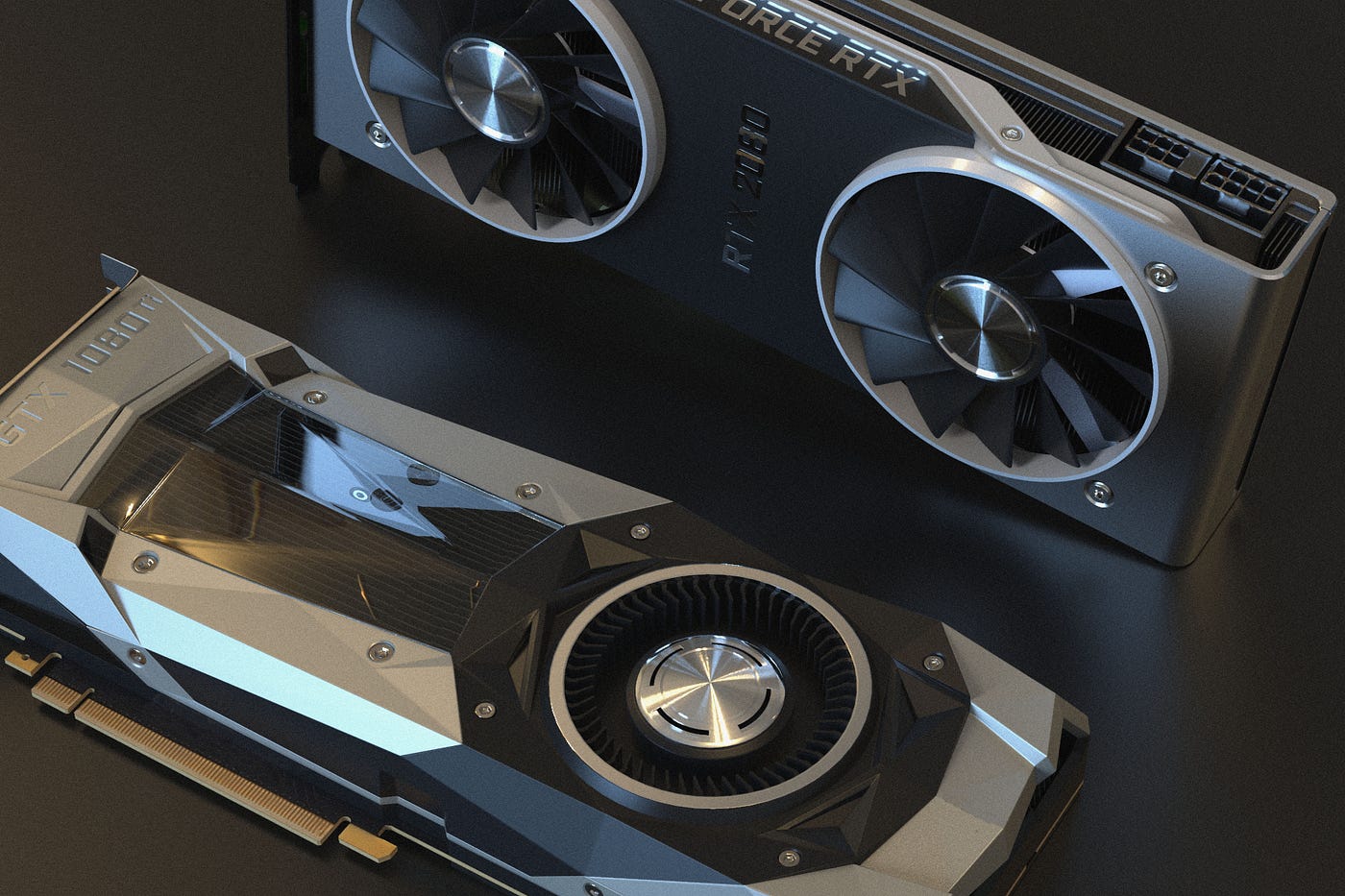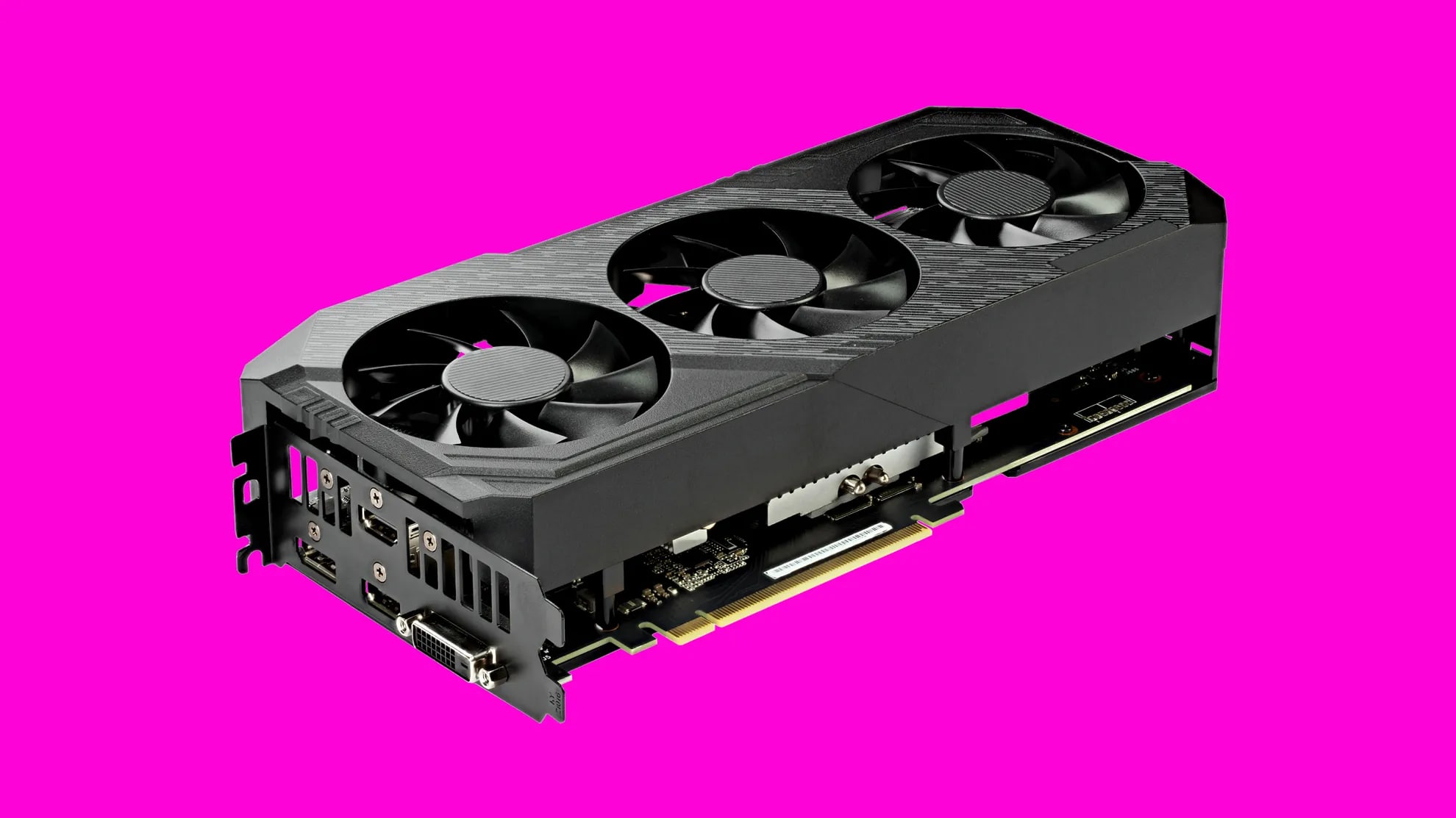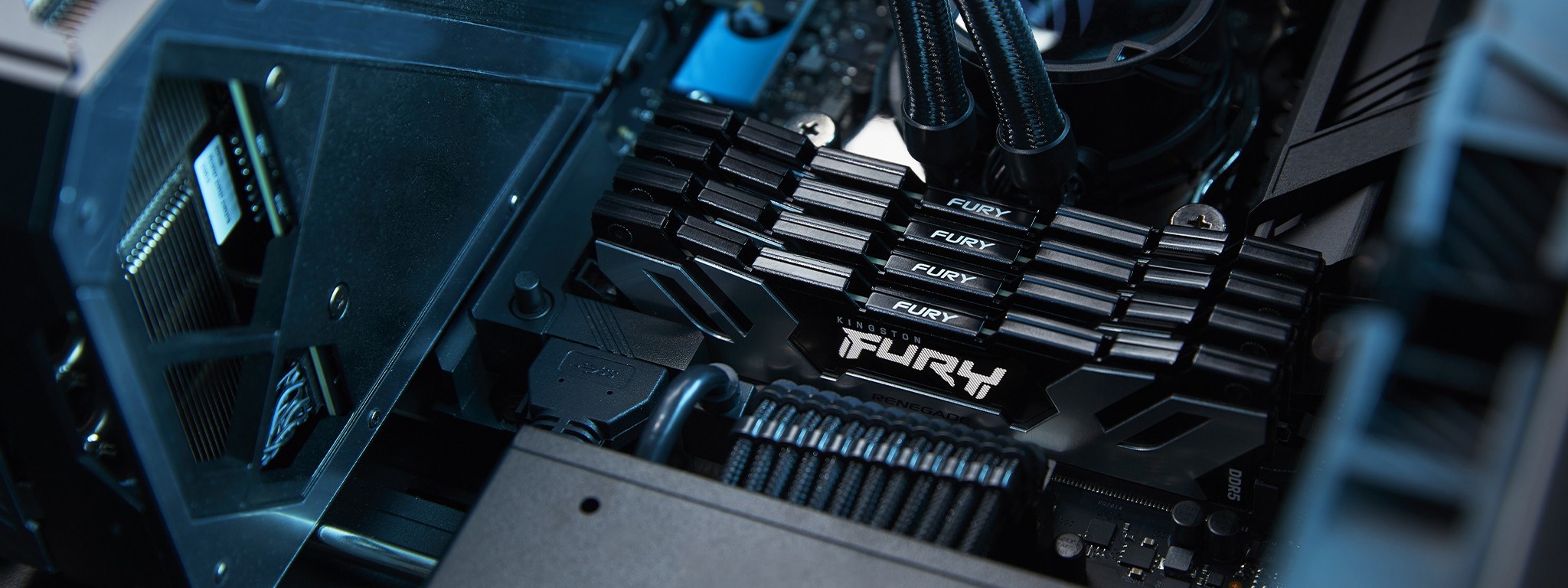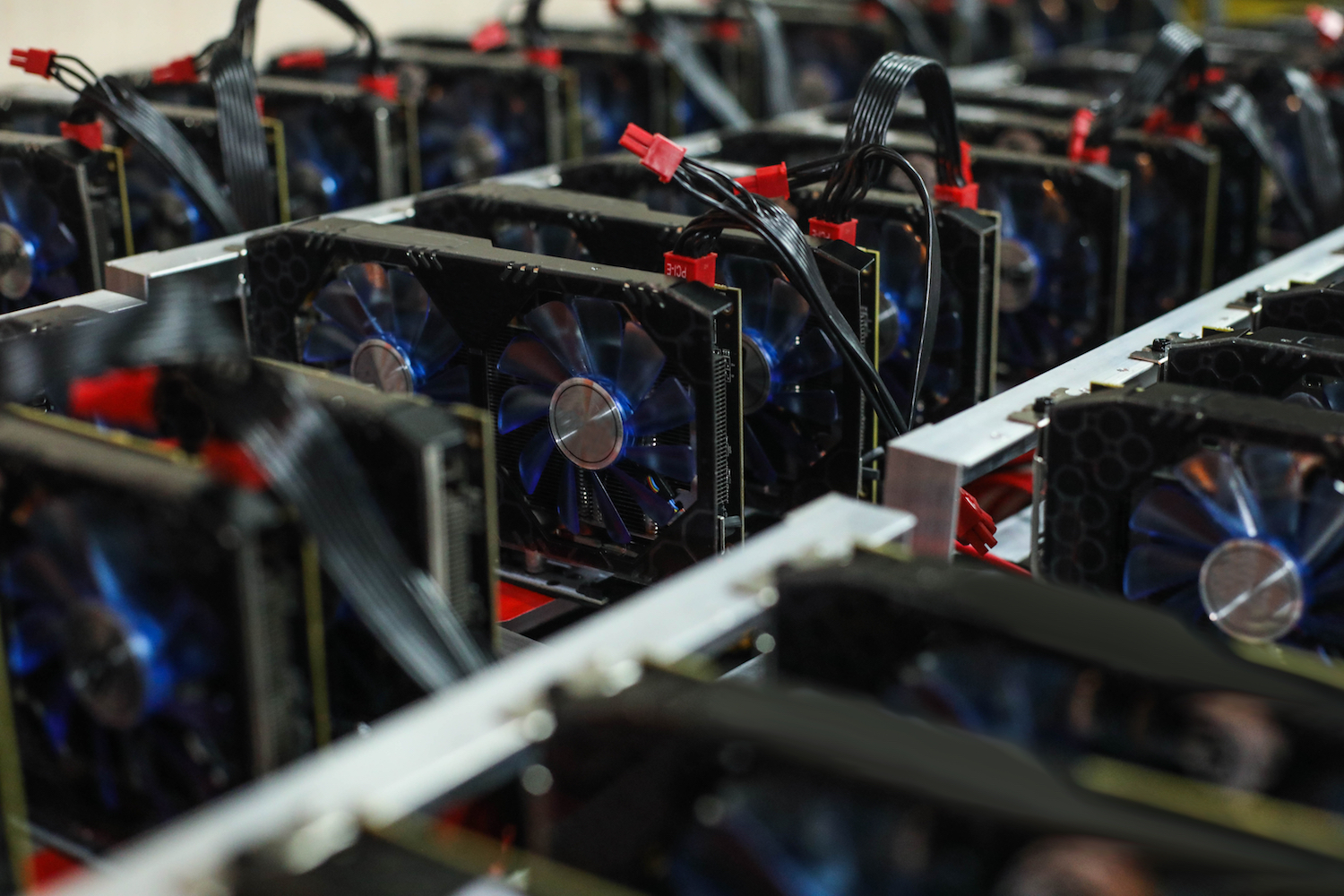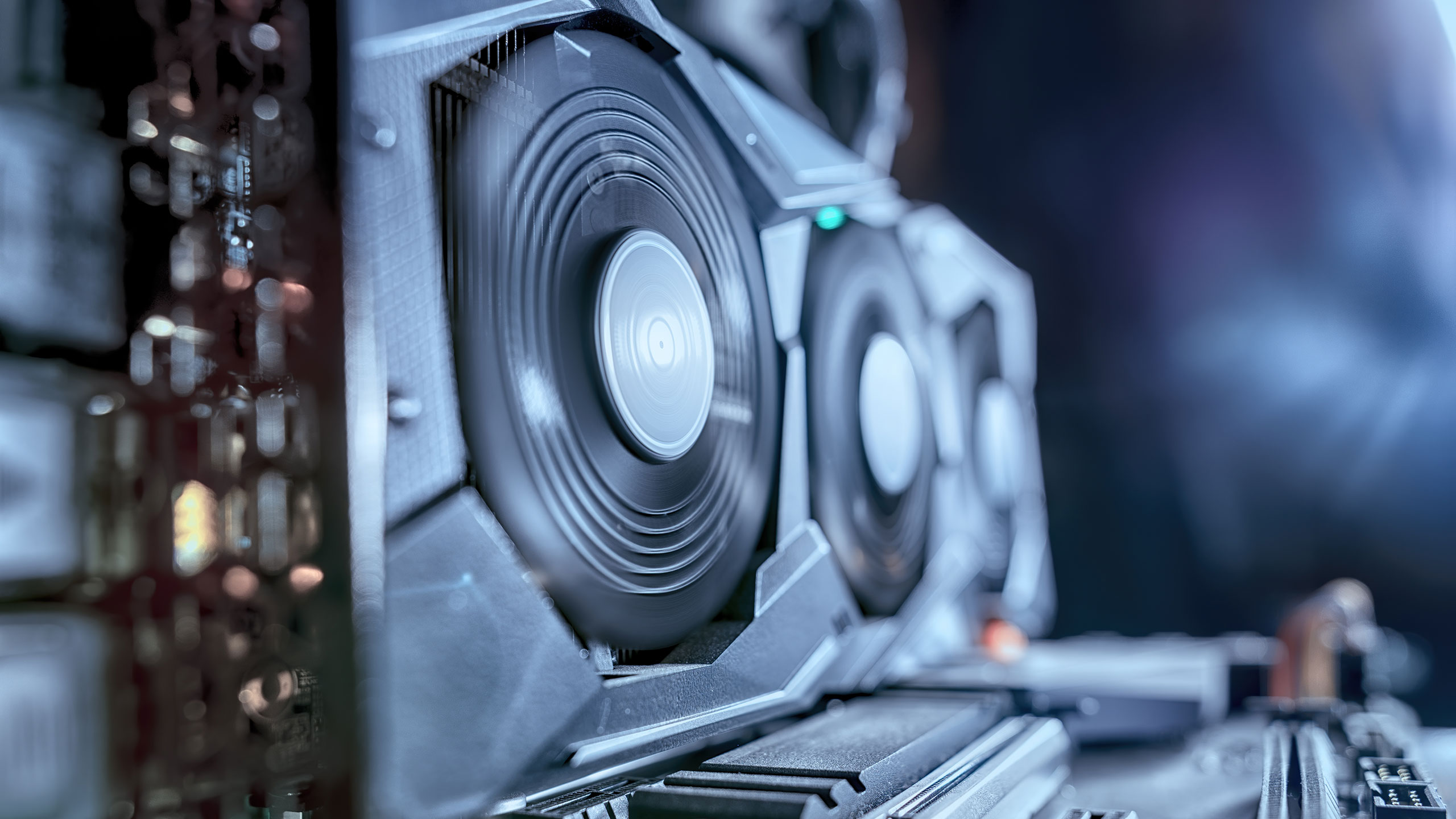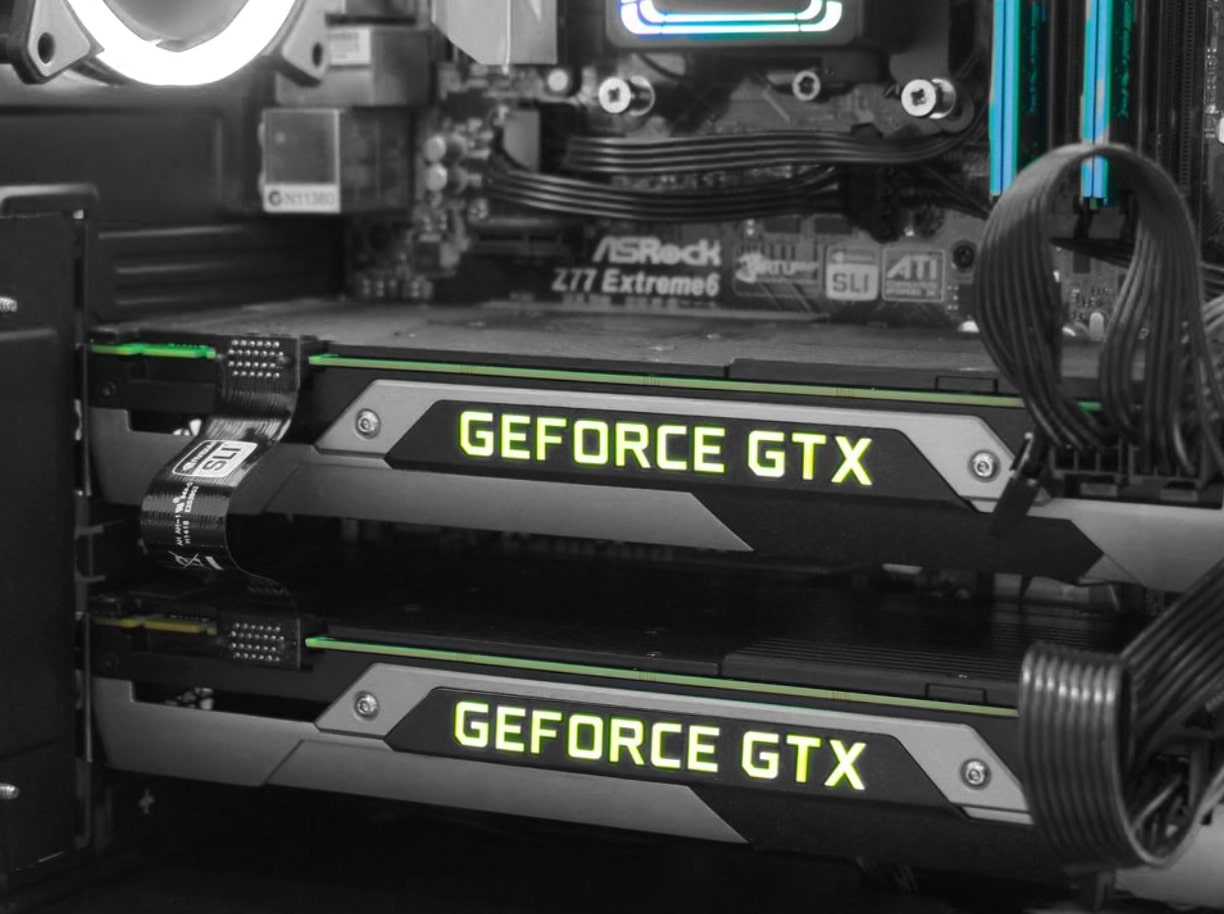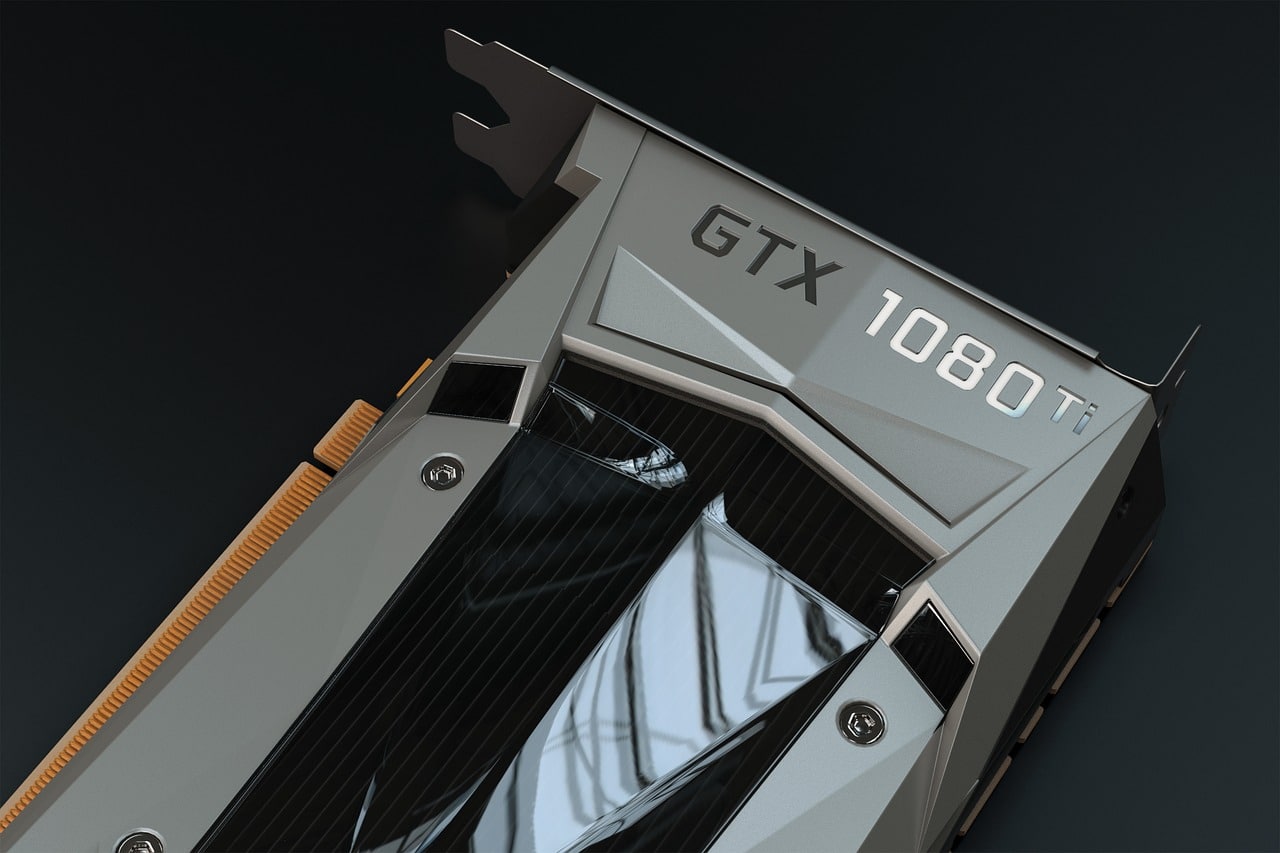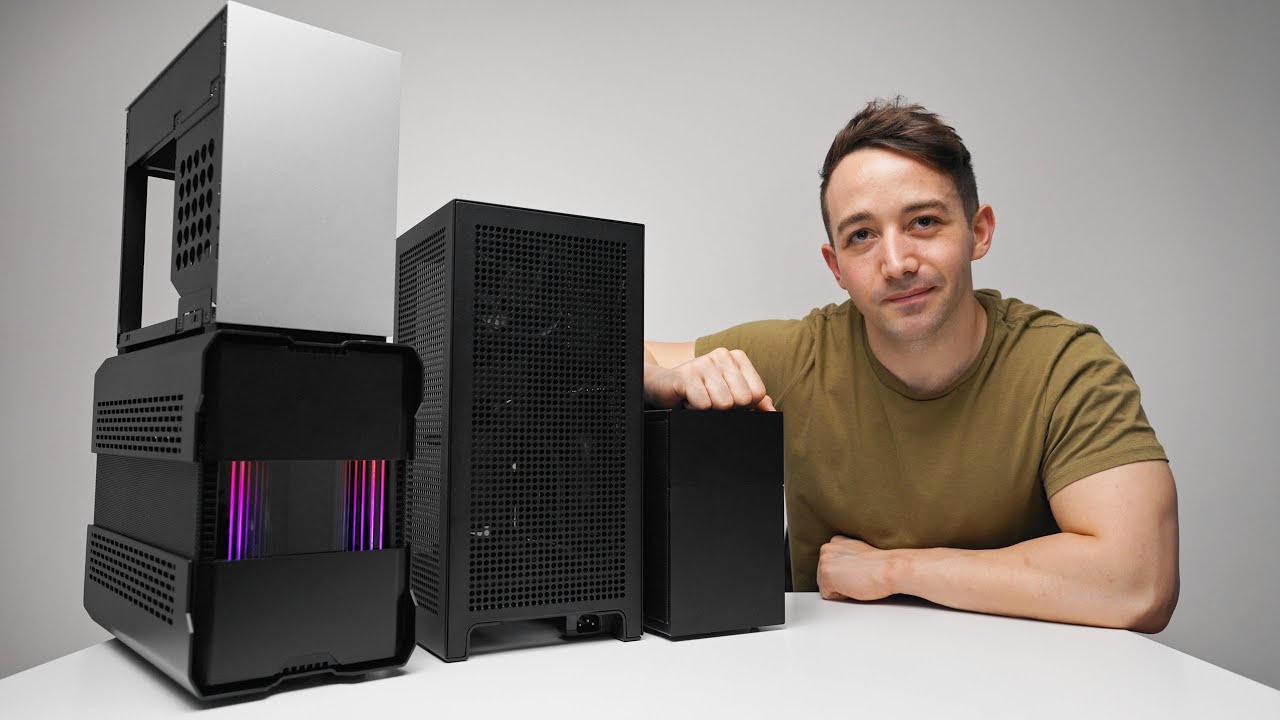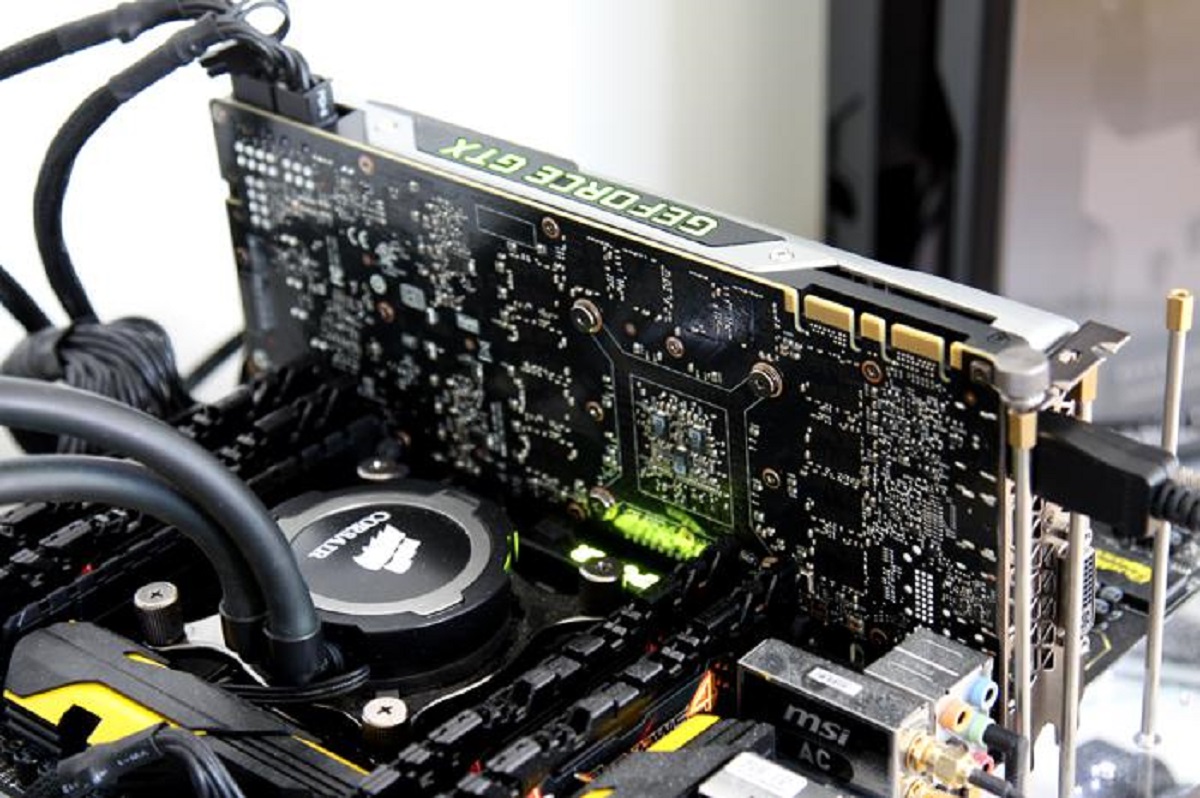Introduction
Choosing the right graphics card for your computer can be a daunting task, especially with the wide range of options available in the market today. Whether you are a casual gamer, a professional video editor, or a graphic designer, the graphics card you select will have a significant impact on the performance and visual quality of your computer.
Graphics cards, also known as video cards or GPUs (Graphics Processing Units), are responsible for rendering and displaying images, videos, and animations on your computer’s monitor. They are crucial components that determine how well your computer can handle tasks that require intensive graphic processing. While modern integrated graphics found in most CPUs can handle everyday tasks, they might struggle when it comes to demanding applications like gaming or professional work.
When choosing a graphics card, there are several factors to consider. This guide will walk you through the key aspects to help you make an informed decision that best suits your needs and budget.
Compatibility
Before purchasing a graphics card, it is crucial to ensure compatibility with your computer’s hardware and software. Incompatibility can lead to compatibility issues, reduced performance, or even complete failure of the graphics card.
The first thing to consider is the interface compatibility. Most graphics cards today use the PCI Express (PCIe) interface, but it is essential to check the specific PCIe version supported by your motherboard. If your motherboard only supports PCIe 2.0, for example, it may not be compatible with newer graphics cards that require PCIe 3.0 or higher.
Next, consider the power supply requirements. Graphics cards consume a significant amount of power, so ensure that your power supply unit (PSU) can provide enough wattage to support the graphics card. Check the minimum recommended power supply wattage specified by the graphics card manufacturer, and make sure your PSU meets or exceeds that requirement.
Another crucial aspect is the physical dimensions and form factor. Some high-end graphics cards can be quite large and may not fit inside smaller computer cases. Measure the available space in your case and compare it with the length and width specifications of the graphics card you are considering to ensure a proper fit.
Additionally, check the compatibility of the graphics card’s drivers with your operating system. While most graphics cards are compatible with popular operating systems like Windows and macOS, it’s always a good idea to verify this information on the manufacturer’s website or product documentation.
Lastly, consider future compatibility. If you plan to upgrade your computer in the future, think about how the graphics card will work with other components. Will it be compatible with future CPU upgrades or additional RAM? Planning ahead can save you from compatibility issues down the line.
Performance
The performance of a graphics card is a crucial factor to consider when making a purchase decision. It directly impacts how well your computer can handle graphics-intensive tasks such as gaming, video editing, and 3D rendering.
One of the primary metrics to consider when evaluating performance is the GPU clock speed. This refers to the speed at which the graphics processing unit (GPU) operates. A higher clock speed generally indicates better performance, as it allows for faster calculations and smoother graphics rendering.
Another important factor is the number of CUDA cores or stream processors. These are the individual processing units within the GPU that handle complex calculations. A graphics card with a higher number of cores can handle more calculations simultaneously, resulting in improved performance.
Memory bandwidth is also vital for performance. It refers to the speed at which data can be transferred between the GPU and the graphics card’s memory. Higher memory bandwidth allows for faster data transfer, enabling the GPU to access data more quickly and improve overall performance.
The amount of video memory, or VRAM, is another significant consideration. VRAM is dedicated memory on the graphics card that stores data and textures required for rendering graphics. Higher VRAM capacity allows for smoother performance, especially when dealing with high-resolution textures and complex scenes. However, it’s important to note that excessive amounts of VRAM may not provide substantial performance gains unless you are working with extremely demanding applications or multiple monitors.
In addition to these technical specifications, it’s crucial to consider real-world performance benchmarks and reviews. These tests evaluate a graphics card’s performance in various applications and games, giving you an idea of how it will perform in your specific use cases.
It’s important to strike a balance between your performance needs and your budget. While high-end graphics cards can deliver top-tier performance, they can also come with a hefty price tag. Consider your requirements and prioritize the features and performance metrics that are most important for your specific usage scenarios.
Budget
When choosing a graphics card, your budget will play a significant role in determining the options available to you. Graphics cards can vary greatly in price, ranging from budget-friendly options to high-end, top-of-the-line models.
Before setting a budget, consider your specific needs and requirements. Are you a casual gamer looking for smooth gameplay at moderate settings, or a professional content creator in need of robust graphics processing capabilities? Understanding your usage scenarios will help you prioritize the features that are most important to you.
If you’re on a tight budget, there are several budget-friendly graphics cards that offer decent performance for everyday tasks, light gaming, and multimedia consumption. These cards typically come with fewer advanced features but can still provide a satisfactory experience for casual users.
For those with a more substantial budget, higher-end graphics cards offer superior performance and advanced features such as ray tracing and hardware-accelerated machine learning. These cards are well-suited for demanding applications like gaming at maximum settings, professional video editing, and 3D rendering. However, they do come at a higher price point.
It’s also essential to consider the cost-to-performance ratio. This metric helps determine the value a graphics card offers in terms of performance relative to its price. Comparing multiple options and reading reviews can give you a better idea of which cards provide the best bang for your buck.
Keep in mind that technology advances rapidly, and new graphics cards are released regularly. Consider whether you want to invest in the latest models or opt for slightly older, more budget-friendly options that still offer excellent performance.
Lastly, remember that the graphics card is just one component of your overall system. Allocating a reasonable portion of your budget to the graphics card while considering other components, such as the CPU and RAM, will help ensure a balanced and efficient system.
Power Consumption
When selecting a graphics card, it is important to consider its power consumption, as it can have implications for both your electricity bill and the overall stability of your computer system.
Graphics cards require a significant amount of power to function properly, especially high-end models designed for demanding tasks like gaming or professional video editing. It is crucial to make sure that your power supply unit (PSU) can handle the power requirements of the graphics card you plan to purchase.
Most graphics card manufacturers provide a recommended minimum power supply wattage for their products. It is essential to check these power requirements and ensure that your PSU has enough wattage capacity to supply sufficient power to the graphics card, along with other components of your system.
Keep in mind that power supply units have different power efficiency ratings, indicated by the 80 Plus certification. It is generally recommended to choose a power supply with a higher efficiency rating, as it translates to less wasted energy and a more environmentally friendly solution. A more efficient power supply can also help reduce heat generation and noise levels within your computer system.
Another aspect to consider is power management features offered by certain graphics cards. Some cards have advanced power management technologies that allow them to adjust their power consumption dynamically based on the workload. This can result in lower power consumption during idle or light usage, leading to energy savings and reduced heat output.
Additionally, it is worth noting that high-performance graphics cards tend to generate more heat when under heavy load. This heat must be dissipated to maintain stable operation. Make sure your computer case has proper cooling solutions, such as fans or liquid cooling, to prevent overheating and ensure optimal performance and longevity of your graphics card.
By considering the power consumption of a graphics card and its compatibility with your power supply unit, you can ensure a safe and efficient system that meets your performance needs while keeping your energy consumption in check.
Cooling
Cooling is an important aspect to consider when choosing a graphics card, as it directly impacts its performance, longevity, and overall stability. Graphics cards generate a significant amount of heat during operation, and effective cooling mechanisms are essential to keep them operating at optimal temperatures.
Most graphics cards come with built-in cooling solutions, typically in the form of fans or heatsinks. These cooling mechanisms aim to dissipate the heat generated by the graphics card’s GPU and other components.
The number and size of fans on a graphics card can greatly affect its cooling performance. More fans generally mean better airflow and improved heat dissipation. Larger fans can spin at lower speeds while moving the same amount of air, resulting in quieter operation. However, it’s important to ensure that your computer case has sufficient space to accommodate larger graphics cards with multiple fans.
In some cases, you may come across graphics cards with aftermarket cooling solutions from third-party manufacturers. These cards often feature larger heatsinks, additional fans, or even liquid cooling solutions. While these options provide enhanced cooling performance, they usually come at a higher cost.
It’s also worth considering the design and layout of your computer case when it comes to cooling. Proper airflow within the case is essential to help dissipate heat effectively. Make sure your case has adequate airflow, with fans positioned in strategic locations to promote optimal cooling of the graphics card and other components.
Noise level is another factor to consider. Graphics cards with more fans or higher cooling capacity may generate more noise compared to models with less robust cooling solutions. If a quiet computing environment is important to you, opt for graphics cards with efficient cooling systems that prioritize noise reduction.
Regular maintenance is crucial for ensuring optimal cooling performance. Over time, dust and debris can accumulate on the graphics card’s cooling components, hindering heat dissipation. Regularly clean the fans and heatsinks to remove any dust or dirt buildup, ensuring that your graphics card operates at optimum temperatures.
By choosing a graphics card with effective cooling solutions, considering case airflow, and maintaining regular cleaning, you can ensure that your graphics card performs optimally and remains stable even during intense workloads or gaming sessions.
Resolution and Refresh Rate
When selecting a graphics card, it’s crucial to consider the resolution and refresh rate you desire for your display. These factors significantly impact the visual quality and smoothness of your gaming or multimedia experience.
The resolution refers to the number of pixels displayed on your monitor. Higher resolutions, such as 1080p (Full HD), 1440p (2K), or 2160p (4K), provide sharper and more detailed visuals. However, higher resolutions also require more graphics processing power to render the increased number of pixels. Therefore, it’s essential to choose a graphics card that can handle your desired resolution without compromising performance.
The refresh rate, measured in Hertz (Hz), signifies the number of times per second your monitor can refresh the displayed image. Higher refresh rates, such as 144Hz or 240Hz, result in smoother motion and reduced blur, especially when playing fast-paced games or watching action-packed videos. To fully utilize higher refresh rates, your graphics card needs to be capable of delivering high frame rates.
Some graphics cards support technologies like Adaptive Sync (e.g., AMD FreeSync) or NVIDIA G-SYNC, which synchronize the refresh rate of the display with the frame rate output of the graphics card. This synchronization helps reduce screen tearing and provides a smoother gaming experience. However, to take advantage of these technologies, make sure your monitor supports them as well.
It’s also important to note that different graphics cards have different capabilities when it comes to driving multiple displays simultaneously. Higher-end cards may support multiple monitors or even ultra-wide displays with high resolutions and refresh rates. If you have specific requirements for multi-display setups, ensure that the graphics card you choose can accommodate your needs.
Keep in mind that higher resolutions and higher refresh rates typically require more powerful graphics cards. If you intend to play games or work with applications that demand high graphical performance, make sure your chosen graphics card can meet those requirements for your desired resolution and refresh rate.
Considering the resolution and refresh rate you desire ultimately depends on your specific usage scenarios and preferences. It’s important to find the right balance between visual quality, smoothness, and the capabilities of your graphics card to ensure an enjoyable and immersive experience.
Graphics Card Memory
The amount of memory on a graphics card, commonly referred to as VRAM (Video Random Access Memory), is an important consideration when choosing a graphics card. VRAM plays a crucial role in storing and accessing data required for rendering graphics and textures.
The amount of VRAM determines how much graphical data a graphics card can hold and process at any given time. Higher amounts of VRAM are especially beneficial when working with high-resolution textures, complex 3D models, or multiple monitors.
For most casual gamers and standard computing tasks, graphics cards with 4GB to 6GB of VRAM are generally sufficient. This amount of VRAM is suitable for playing games at 1080p resolution and performing everyday multimedia tasks without experiencing significant performance issues.
However, if you’re engaged in more demanding tasks like running the latest AAA games at higher resolutions, rendering 3D animations, or working with large datasets in professional applications, consider opting for graphics cards with 8GB or even 16GB of VRAM. These higher VRAM capacities allow for smoother performance, reduced stuttering, and improved overall graphical fidelity.
It’s worth noting that simply having a higher amount of VRAM does not automatically guarantee better performance. The performance gain from higher VRAM depends on several factors, including the complexity of the scenes being rendered and the resolution of the display. Graphics cards with excessive VRAM may not provide substantial performance improvements if the tasks at hand do not require such high memory capacities.
It’s important to strike a balance between your VRAM requirements and the overall specifications of the graphics card. Consider the resolution and refresh rate you want to achieve, as well as the demanding applications or games you plan to run. Look for reviews and benchmarks to gauge the performance of graphics cards with varying VRAM capacities in your specific use cases.
Lastly, keep in mind that graphics cards with higher VRAM capacities tend to come at a premium price. Consider your budget and weigh the benefits of increased VRAM against your specific needs to make an informed decision.
Connectivity
The connectivity options offered by a graphics card are important to consider, as they determine how you can connect your display monitors and other peripheral devices to your computer.
The most common connectivity option for graphics cards is the DisplayPort. DisplayPort supports high resolutions and refresh rates, making it ideal for gaming, video editing, and professional applications. It also allows for daisy-chaining multiple monitors, reducing cable clutter.
HDMI (High-Definition Multimedia Interface) is another widely used connectivity option. HDMI is commonly found on televisions and monitors and supports both audio and video signals. While HDMI is a popular choice for connecting to displays, it may not support higher refresh rates or resolutions as efficiently as DisplayPort.
Another connection option to consider is DVI (Digital Visual Interface). DVI is an older standard but is still prevalent on many monitors and projectors. It can support high resolutions but lacks the capability to transmit audio signals.
In addition to these primary connectivity options, some graphics cards may also feature additional ports such as VGA or HDMI. These additional ports can be useful if you have older displays or want to connect your computer to a wider range of devices.
For those in need of virtual reality (VR) support, it’s important to look for graphics cards with a VirtualLink port. VirtualLink is a new standard designed specifically for VR headsets, providing power, DisplayPort, and USB data connections through a single cable.
Consider the number of connectivity ports available on the graphics card and your specific requirements. If you plan to connect multiple monitors, ensure that the card has enough ports to accommodate your setup. If you require specific connections for audio or other peripheral devices, make sure the graphics card provides the necessary ports.
When choosing a graphics card, it’s also helpful to check if the card supports the latest display standards and technologies such as HDR (High Dynamic Range). This enables more vibrant colors and improved contrast for a more visually immersive experience.
Lastly, consider the compatibility of the graphics card’s connectivity options with your display devices. Ensure that your monitors or projectors have corresponding input ports. If your display devices only support older standards, ensure the graphics card has the necessary adapters or converters to connect with them.
By carefully considering the connectivity options of a graphics card, you can ensure seamless and efficient integration with your display devices and other peripherals, allowing you to make the most of your graphics card’s capabilities.
Warranty and Support
When choosing a graphics card, it’s essential to consider the warranty and support offered by the manufacturer. An extended warranty and reliable customer support can provide peace of mind and assistance in case any issues arise with your graphics card.
Typically, graphics card manufacturers offer a standard warranty that covers defects in materials or workmanship for a specified period, such as one or two years. Some manufacturers may provide longer warranties or offer the option to purchase extended warranties for additional coverage.
It’s important to carefully review the warranty terms and conditions. Understand what is covered and what is not, including any limitations or exclusions. Pay attention to any requirements for warranty registration or adequate maintenance to ensure coverage is maintained.
Consider the reliability and reputation of the manufacturer when it comes to honoring warranty claims and providing timely support. Look for customer reviews and feedback regarding their experiences with warranty claims and customer service. A reputable manufacturer with good customer support can assist you in resolving any technical or warranty-related issues efficiently.
Additionally, it can be beneficial to check for any additional support services provided by the manufacturer. Some manufacturers offer online troubleshooting resources, driver updates, and forums or communities where users can seek assistance and share experiences. These resources can be valuable when encountering technical issues or seeking optimization tips.
Another aspect to consider is the availability of driver updates. Graphics card manufacturers regularly release driver updates to improve compatibility, performance, and stability. Ensure that the manufacturer consistently provides driver updates for the graphics card you are considering, as outdated drivers may lead to compatibility issues or reduced performance. Timely driver updates are particularly important if you plan to play the latest games or use specialized software that relies on up-to-date graphics drivers.
Lastly, consider the reputation of the manufacturer for product reliability and quality. Reading reviews and researching the manufacturer’s history can give you an indication of their commitment to producing reliable, high-quality graphics cards.
By choosing a graphics card from a reputable manufacturer with a solid warranty and good customer support, you can have confidence in the longevity and assistance available for your investment.
Conclusion
Choosing the right graphics card for your computer is a decision that can greatly impact your overall computing experience, whether you’re a casual gamer, a professional content creator, or someone in between. With the wide variety of options available, it’s important to carefully consider several factors before making your final decision.
Compatibility with your computer’s hardware, power consumption, cooling performance, and connectivity options are all crucial aspects to evaluate when selecting a graphics card. Additionally, considering the performance, budget, and graphics card memory that align with your specific needs will help ensure that you make an informed choice.
Equally important is the warranty and support provided by the manufacturer. Having a reliable warranty and responsive customer support can offer peace of mind and assistance when needed.
Remember to consider the specific resolution and refresh rate you desire for your display, as well as the amount of VRAM needed to handle your graphics-intensive tasks.
By carefully analyzing these factors and finding the right balance for your needs and budget, you can select a graphics card that will provide optimal performance, visual quality, and longevity. Stay informed, read reviews, and consider your usage scenarios to make the best possible choice for your computing needs.
With the right graphics card, you can unlock a world of immersive gaming experiences, seamless content creation, and smooth multimedia playback, elevating your overall computing experience to new heights.







